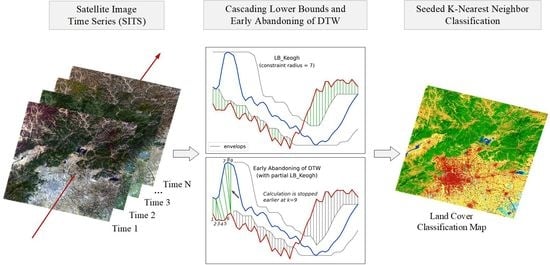Seeded Classification of Satellite Image Time Series with Lower-Bounded Dynamic Time Warping
Abstract
Share and Cite
Zhang, Z.; Tang, P.; Hu, C.; Liu, Z.; Zhang, W.; Tang, L. Seeded Classification of Satellite Image Time Series with Lower-Bounded Dynamic Time Warping. Remote Sens. 2022, 14, 2778. https://doi.org/10.3390/rs14122778
Zhang Z, Tang P, Hu C, Liu Z, Zhang W, Tang L. Seeded Classification of Satellite Image Time Series with Lower-Bounded Dynamic Time Warping. Remote Sensing. 2022; 14(12):2778. https://doi.org/10.3390/rs14122778
Chicago/Turabian StyleZhang, Zheng, Ping Tang, Changmiao Hu, Zhiqiang Liu, Weixiong Zhang, and Liang Tang. 2022. "Seeded Classification of Satellite Image Time Series with Lower-Bounded Dynamic Time Warping" Remote Sensing 14, no. 12: 2778. https://doi.org/10.3390/rs14122778
APA StyleZhang, Z., Tang, P., Hu, C., Liu, Z., Zhang, W., & Tang, L. (2022). Seeded Classification of Satellite Image Time Series with Lower-Bounded Dynamic Time Warping. Remote Sensing, 14(12), 2778. https://doi.org/10.3390/rs14122778







